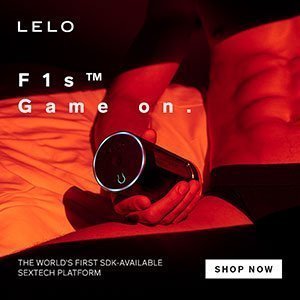As the sex toy industry grows, and consumers are confronted with an ever-increasing number of options, knowing how to find a sex toy you’ll enjoy becomes more complicated than back in the day when your only choices were vibrating or non-vibrating.
One approach that both customers and retailers take is to shop for sex toys based on gender identity or sexual orientation. If you’ve visited many online sex shops you have probably seen sections like “sex toys for women” or “gay sex toys“. It might seem logical – if you identify as gay, then you have “gay sex” and therefore you’ll be looking for “gay sex toys“. Or if you identify as a woman then the sex toys you’ll be looking for will be “women’s sex toys“. But what seems logical and what makes sense may be two very different things.
The Problem With Gay Sex Toys
To begin with, there isn’t one kind of gay sex, anymore than there is one kind of straight, bisexual, or lesbian sex. Stereotypes suggest otherwise but sexual orientation does not describe how we have sex.
Knowing someone is gay tells you something about who they may be having sex with (if they are even having partnered sex at the time), but it tells you nothing about how they feel pleasure in their body, what parts of their body they like to engage when having sex, or what the context or details of the sex play are. If I want to help someone find a sex toy that’s right for them, knowing their sexual orientation is of practically no use to me.
If I am a lesbian, and I start my sex toy shopping by clicking on the “lesbian sex toy” category on some sex shop website I am immediately narrowing my options based on someone else’s (usually misguided and narrow-minded) understanding of the kind of things lesbians find sexually pleasurable. This is too bad, since the diversity of sexual expression among people who identify as lesbian is as great as among any group of people, and even though it might make sense for me to click on the button that reflects how I feel about myself, when I do, I’m probably limiting my options because of the way retailers, manufacturers, and more broadly, capitalism, works.
The Problem With Sex Toys By Gender
There is a similar problem with the idea of “sex toys for men” or “sex toys for women“. Sex toys are not made for groups of people, they are made for bodies. They aren’t even made for whole bodies (not until the orgasmatron becomes commercially available. At best you can say that some sex toys are made for some body parts. Some sex toys, like penis rings or nipple clamps, are designed for particular body parts. But even these toys can be used on other parts of the body, and why restrict your options?
Also, we shouldn’t confuse anatomy with gender. Not everyone who is a man has the same body parts. All women don’t feel pleasure in the same way from the same areas of their body. And you’ll notice that for the most part when companies and retailers talk about gender they only give you the two options. Plenty of us experience gender as something more complicated than a choice between column A and column B. You can say the same about our potential for sexual pleasure.
Interestingly, some stores (Babeland, Come As You Are, Early2Bed, Good Vibrations, to name a few) have created sections of products for “gender expression” but you’ll note that this is different from saying “these products are for men“. Instead it is a way of saying “these products are good for exploring your own experience of gender“.
The Bottom Line
My preferred definition of sex toy is anything that isn’t a part of your body that you use for sexual pleasure. There are countless ways to categorize sex toys and it’s hard to know whether retailers are following the lead of customers, or if they are creating categories of their own to guide consumer thinking.
There are times when choosing a toy based on your own experience and identity may make sense. For example if you want a sex toy as a way to express your gender, then clicking on that identity button is probably the way to go.
But if you want a sex toy to explore possibilities of giving and receiving sexual pleasure, limiting yourself to social or corporate expectations about what a person “like you” might find pleasurable is probably not the best way to shop. It’s one of the annoying trade-offs about the identities we take on. They can bring us a tremendous sense of pride and ground us in ways we never before felt grounded. But they also open us up to all manner of social expectations and consumerist demands.
Ultimately there’s no right or wrong, and for the most part the toys are all the same. But it’s worth thinking about how stereotypes and expectations, even when they appear to be about celebrating identity, can actually get in the way of pleasure.












